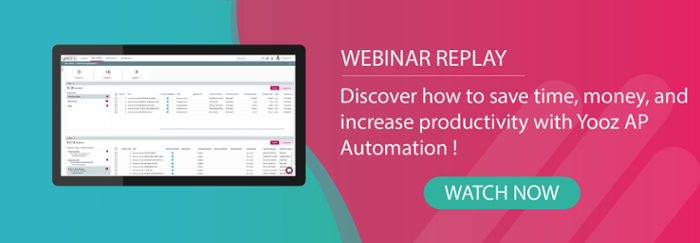After a tumultuous year that saw traditional ways of working upended and altered, businesses and financial departments in particular have adjusted their ways and are getting comfortable with the idea of digital transformation and its relationship with both remote employees and the "new normal." That said, no industry can afford to get complacent. The world - and the business environment with it - continue to change at a rapid pace and, if the finance department is to lead from the front lines, it needs to integrate technology and digital tools into its processes to stay ahead of competitors.
Companies agree; according to a survey by Financial Director, the majority of finance leaders think that their department's digital transformation projects are lagging behind their competition. In fact, the survey found that 54 percent of respondents were either behind or not up to date in those projects, another 18 percent didn't know how they compared to the competition, and only 7 percent thought that they were completely up to date.
You might ask why are these projects so important, and why should finance leaders even care? The answers can all be found through Accounts Payable Automation.
The cost of a manual accounts payable (AP) process
Accounts payable is the lifeblood of a business. It is the system by which any business manages finances with their clients and suppliers by identifying and completing outstanding payments. At the most simple, superficial level it is the invoice in/payment out process.
Throughout history this was a primarily manual process with handwritten invoices and careful counted out cash payments. Over time things got more complicated as business got larger and the number of transactions increased. Today, incoming invoices (and other documents) can number into the thousands. Trying to manually process all of these - and that means each invoice alone - is a time-consuming, labor-intensive, error-prone, rising-cost activity that relies heavily on paper and is dependent upon human accuracy.
The result? A system that can easily and rapidly spin out of control, open to a real possibility of error and fraud occurring in the early stages (as well as throughout). Not to mention the increasing costs associated with operating as well as reviewing and fixing issues. And, when suddenly the traditional office environment was upended and altered, nobody was in the office to receive and process anything. If somebody went back to pick up papers they risked losing them in transport (assuming that they were all received. Adjustments had to be made. That adjustment was automation, specifically invoice payable automation software.
And, since automation implied the ability to continue operating, the whole idea of digitalization took on new meaning.
Nick Ludlow, regional vice president at Chrome River, believes that “there is a correlation between the number of finance leaders who have only just started their digitization projects, and those who feel that they are behind the curve compared to their peers. Likewise, the number of companies who have almost completed their digital transformation is similar to those that think they are ahead of the competition”.
The persuasive benefits of AP Automation
The primary - if not only - focus of finance department digitization should be the incorporation of AP automation. More specifically, an intelligent automated invoice process. This is how a business will achieve a cost-efficient, streamlined accounts payable process. Even better, thanks to cloud-based, software-as-a-service (SaaS), customizable platform payable automation is accessible to any size business and can deliver a fast, demonstrated return on investment (ROI) at a lower cost than ever before.
The reason is that accounts payable automation replaces the labor-intensive, manual tasks. It alleviates unnecessary administration, streamlines the invoice approval and payment process, decreases costs, and of course eliminates human error cause by manual data entry. More specifically, an invoice automation software process:
1. Saves time and money
AP automation replaces manual tasks and can labor at the same detail-oriented level all the time, every day. It reduces processing time from days to hours (or even minutes) which in turn drives more than £10.47 savings per invoice while reducing invoice processing and approval workflow time by 50 percent. When you consider that digitalizing client and supplier documents is 50 to 75 percent more cost-efficient that paper processing... Well, what business doesn't want more work completed for less cost?
2. Automation benefits and incentivizes employees
Manual data capture, invoice categorization, and routing can lead to errors, loss of information, and mismanagement. Accounts payable automation, however, removes redundant, time-consuming administrative tasks from daily duties and gives staff more time to focus elsewhere.
3. Improves security and supplier relationships
AP automation’s end-to-end traceability and transparency make for a reliable, secure accounting process. It also allows financial departments to put authentication mechanisms in place, as well as secure classification (which is a record of historical classification decisions that can function as a source document) and electronic archiving for all operations.
This level of traceability means that a business can respond within minutes to payment inquiries, audit requests, or even just an operations assessment process.
4. Share insights and alignment with stakeholders
Before integrating a payment automation solution, it’s best practice to get buy-in from leaders in your accounting and finance departments, as well as purchasers, suppliers, approvers, and senior management. In fact, from anybody who interacts with the invoice and payment process and could therefore be affected by automation-induced change. This consultation process provides a shared understanding of the day-to-day challenges each stakeholder faces, helping to streamline and optimize working relationships and processes.
Additionally, as records and invoices are stored in one place, stakeholders get full visibility of the accounts payable process and its benefits. You can also analyze the data available to uncover trends and insights to support cashflow management and financial reporting.
5. No more late payments
Traditional AP invoice processing is error-prone, time-consuming, and costly. Until recently, accountants have had to push through invoices as quickly and accurately as possible to honor payments and satisfy vendors. This mounting pressure can lead to mistakes, delays, and late, inaccurate invoices.
AP automation uses intelligent technology to optimize the invoice process so that prompt service delivery is all but guaranteed. It also boosts efficiency and reactivity and ensures that there is less time spent handling and searching for paper documents. In fact, a business now even has the opportunity to develop a new profit center in their finance departments by replacing late payment fines (aka rapidly adding costs) with early payment discounts.
6. Promotes continuity of services
One of the best things about payment automation - especially a cloud-based software platform - is that it is a constantly occurring process. This has caused a mindset shift among senior management who in the past might have been hesitant to let employees work remotely for fear of a dip in quality or productive that directly affected the organization's bottom line. There is also the extra reassurance that no matter what happens, the entire payable process from invoice to payment will still run.
7. Instant and centralized access
In a manual based invoice processing system, employees used to have to chase paper. From collecting documents to input, transporting invoices for approval or further review, moving everything into storage (or looking for and retrieving it)... All these time consuming and labor-intensive tasks throughout the entire process are replaced by automation. However, the automated system goes a step further because it centralizes all of the data so that it is easily accessible and managed through a secure web portal and customized dashboard. Company operations really do become just a keystroke away.
The future of finance
While there was never a question of modernization and now with the sudden realization that change is needed just to keep business afloat there is more pressure than ever to find ways to improve, faster. Now, with the technology in place to ensure that teams are connected and that it is easy for accountants to do their jobs from anywhere, only one question remains: does the finance department want to lead from the front using automation or sit back, ignore the cost of doing nothing, and miss out on all the benefits.
Exploring the AP Automation Benefits with Yooz
Accounts Payable (AP) automation is a transformative approach to streamline financial processes, and Yooz stands out as a powerful solution in reaping these benefits. Yooz automates the entire AP workflow, from invoice capture to data extraction and approval processes. One of the significant advantages is the remarkable reduction in manual efforts, eliminating the risk of errors associated with traditional data entry. Yooz enhances the speed of invoice processing, ensuring timely payments and fostering better relationships with suppliers. With Yooz, businesses not only optimize their AP workflows but also experience improved accuracy, cost savings, and overall efficiency, making it a key player in the realm of accounts payable automation benefits.








